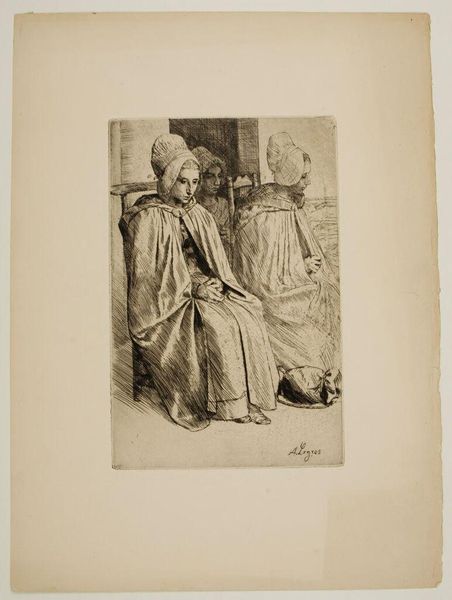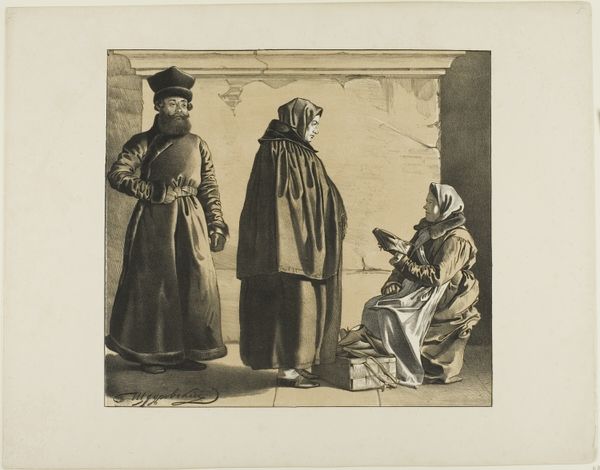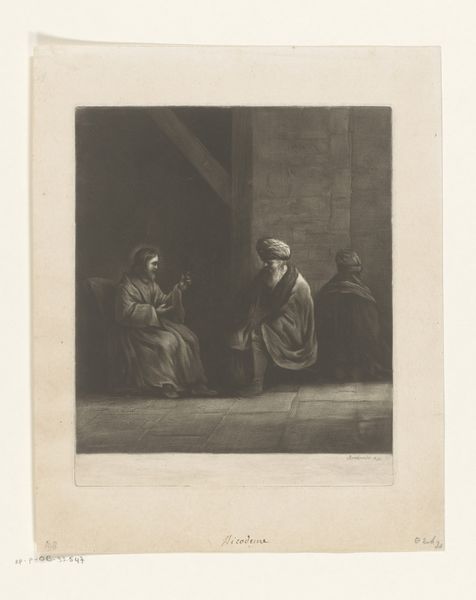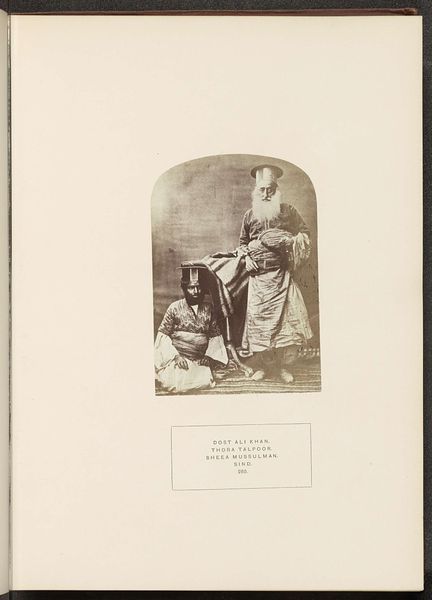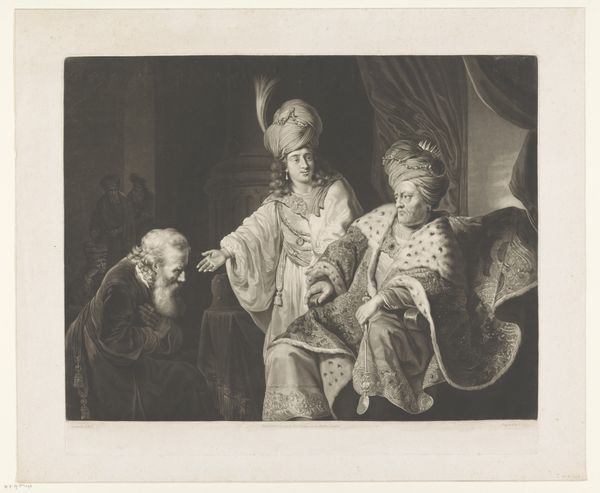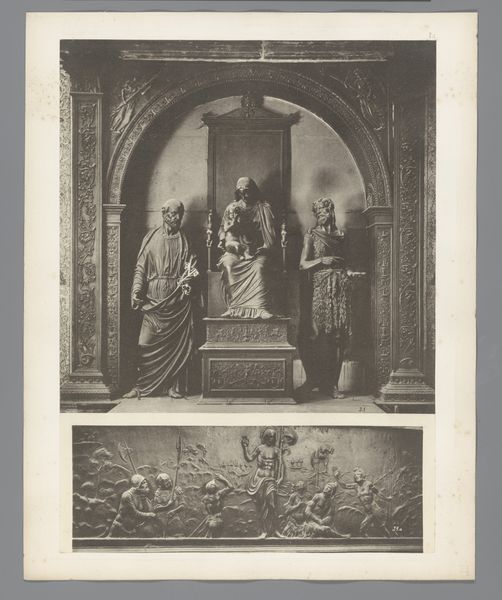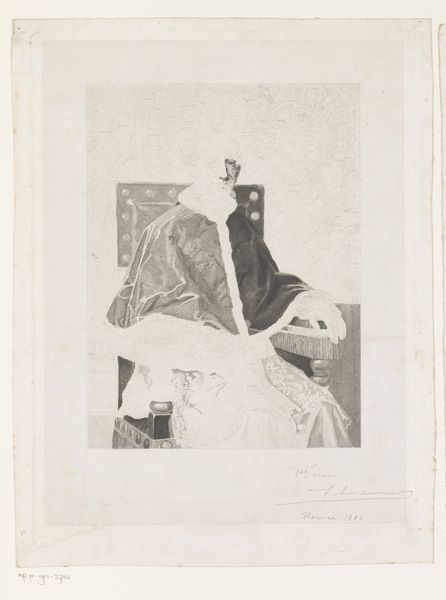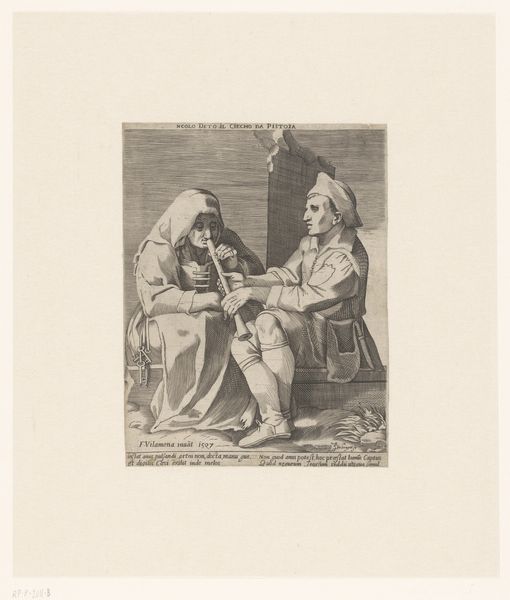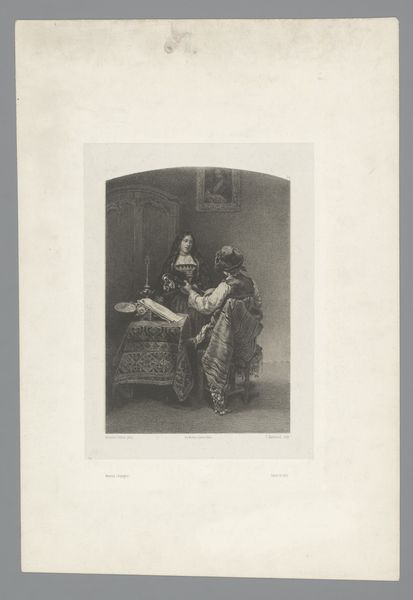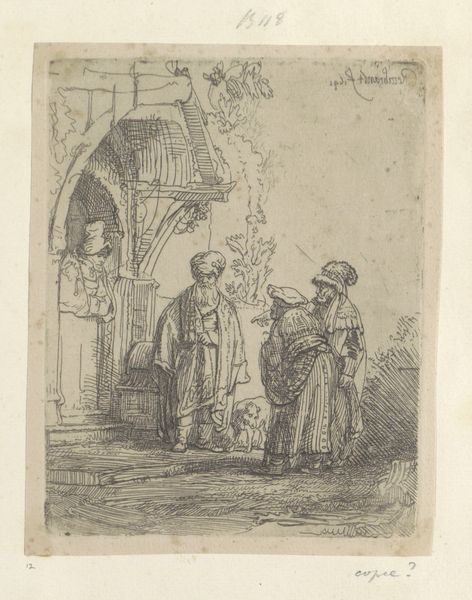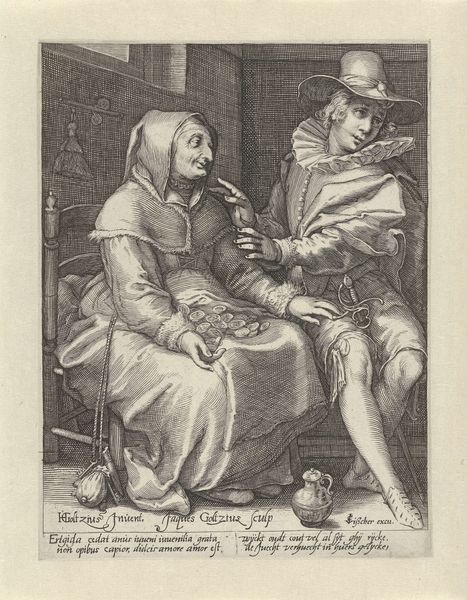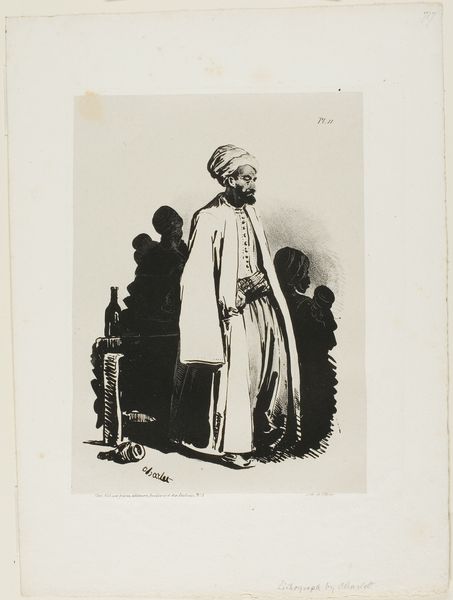
drawing, print, etching, paper
#
portrait
#
drawing
# print
#
etching
#
paper
#
france
#
genre-painting
#
realism
Dimensions: 228 × 149 mm (plate); 362 × 251 mm (sheet)
Copyright: Public Domain
Curator: Legros' 1873 etching, "Peasant Women from Near Boulogne", offers a window into the lives of working-class women in 19th-century France. The piece, rendered in delicate lines on paper, depicts three women in traditional garb. Editor: It strikes me immediately with its stillness and solemnity. The muted tones and contemplative postures create a feeling of quiet endurance, wouldn’t you say? Curator: Precisely. And, given the social realism movement that influenced Legros, we must consider this image within the context of representing the lives of the marginalized. The Bonnets and capes aren't just clothing; they’re markers of their social status and geographical origins, defining them within a specific economic framework. Editor: I’m fascinated by the bonnets themselves. These enveloping white hats frame their faces, almost like halos. Are they meant to suggest a kind of purity, or perhaps the burden of piety on these women? It reminds me of Northern Renaissance art with a very humble quality, what with those clean but imposing shapes that enclose their faces like a frame. Curator: The association with religious iconography is quite insightful. These women occupied a crucial but often unacknowledged space in society, their labor contributing to the economic fabric of France. The visual language connects their labor with a sort of devotion that deserves reverence. This adds nuance to our perception. Editor: Look at their hands, clasped tightly, particularly those of the woman at the forefront. They speak of weariness and resilience, embodying generations of labor. Legros has truly managed to use detail sparsely to get such rich texture. Curator: Absolutely, that quiet strength in the hands conveys an inherited narrative, that tells us how social expectations of labor have changed over time, and perhaps more interestingly, how they haven’t. The women's traditional outfits almost appear like costumes within a very rigidly constructed societal play. Editor: And beyond that there is an unmistakable air of dignity about them, irrespective of their social standing. It reminds us that symbolism, and archetypes, operate across social structures in ways that give everyone agency. It humanizes in a way beyond class boundaries. Curator: It certainly adds layers to how we view these historical subjects as individuals participating within very set constructs. Legros offers us a glimpse into their existence beyond mere societal functions. Editor: What began as a melancholic piece reveals itself as an anthem for ordinary women who persisted.
Comments
No comments
Be the first to comment and join the conversation on the ultimate creative platform.
